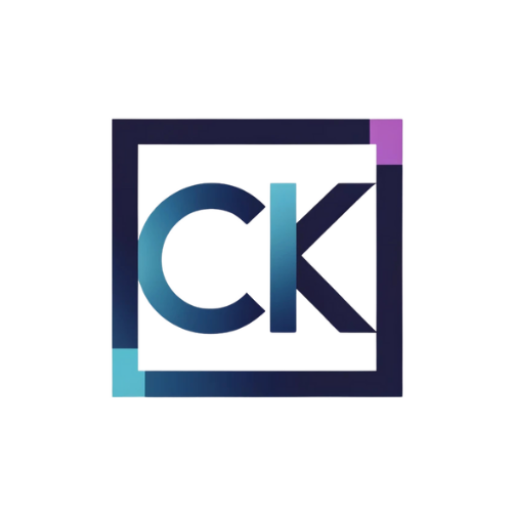Anúncios
ai job search improvement can change how you look for work, but it works best when you control the process.
Did you know a Software Finder survey found 75% of seekers use these tools, and 14% use them for the full application? Those who used them were more likely to land a higher-paying role.
This page gives a clear, practical map so you can get started with confidence. You’ll see how platforms like LinkedIn Premium, Google’s Gemini for Sheets, GPT for Sheets, and Zapier workflows fit into real routines. We’ll show realistic workflows, checkpoints to verify accuracy, and tips to keep your writing personal so employers hear your voice.
Expect privacy notes, verification steps, and trade-offs so you can pick the right tool for your budget and time. Adapt each tip to your industry and experience rather than treating a single method as a guarantee.
Introduction: Why AI matters in today’s job hunt
The landscape for finding roles has shifted; many tasks you once did by hand can now be assisted by modern tools.
Anúncios
Context and relevance
What’s changed: A Software Finder survey shows wide uptake among job seekers. Platforms such as LinkedIn Premium now offer automated fit assessments and tailoring tips. Google’s Gemini for Sheets and GPT for Sheets let you generate personalized messages at scale. Zapier reduces repetitive admin by drafting emails and updating trackers.
What’s new right now
Applicant tracking systems and keyword screens are still common. At the same time, automated assessments help you evaluate fit faster. Use these features as assistants, not replacements.
How to use this roundup
This page works as a practical playbook. Scan sections, pick one or two tools to test, and build a small weekly routine.
- Keep your voice: always edit drafts so your achievements read clearly to hiring managers.
- Verify accuracy: check numbers and claims before sending anything to recruiters hiring managers.
- Be cautious: if you work in a sensitive industry, avoid pasting confidential data into external tools.
AI resume builders and optimization tools that pass the ATS sniff test
Why ATS matters: Applicant tracking systems scan resumes for exact keywords tied to a posting. If your document lacks the role language, it may never reach hiring managers.
Tools and smart use cases
Use resume builders like Teal, Kickresume, and Resume Worded to draft focused bullets. Run optimization tools such as Enhancv and SkillSyncer to score match rates and spot missing skills.
Careerflow and your linkedin profile
Careerflow’s extension audits a linkedin profile and gives step-by-step fixes to improve clarity and alignment with target roles.
Practical workflow
- Paste the posting and map required skills.
- Generate bullets with a resume builder, then verify facts.
- Add metrics (percent, time saved) and swap weak verbs for impact language.
- Run an optimization tool, only add terms you can explain in an interview.
“Keep your resume clean and skimmable; keywords near the top help both systems and people.”
For tips on tailoring materials and career growth, see career growth through resume optimization.
AI job matching tools to find roles that fit your skills and preferences
Matching engines can cut through the noise and surface roles that fit your skills and preferences.
How matching tools work: platforms build a profile from your experience, preferences, and values, then score openings by fit. Talentprise goes deep: it adds traits, motivations, and company preferences, then shares matched profiles with recruiters.
Popular matching engines and what they do
- Talentprise prioritizes roles based on values and motivation, which reduces irrelevant leads.
- Sonara and AutoJob can semi-automate discovery and applications, saving time while you review each posting.
- Career.io maps your goals to organizations so you spend effort on targets that match your trajectory.
- LinkedIn Premium offers on-listing guidance that answers “Am I a good fit?” and suggests edits to your resume and cover letter.
Realistic expectations and verification steps
Rely on matching engines for leads, not blind applications. Always verify postings by checking company pages and cross-referencing listings.
- Look up salary ranges and benefits from reputable sources before applying.
- Customize your materials—matching tools help draft, but you must confirm accuracy.
- Assess culture fit: note team size, product stage, and stated values to decide whether a role will suit you.
“Start with a focused profile so tools recommend relevant openings, not generic roles.”
Scale your outreach and follow-ups: AI for networking, emails, and pipelines
Scale your outreach so you spend less time on admin and more time on meaningful conversations. Use a mix of spreadsheet functions and automation tools to draft personalized notes, track replies, and keep next steps visible.

Gemini for Google Sheets and alternatives
Gemini for Google Sheets adds an =AI() function (Workspace Labs feature) that helps generate personalized icebreakers from a simple contact list.
Workspace Labs note: this feature may be in Labs for some accounts. If you can’t access it, set up GPT for Sheets as an alternative to generate similar outreach at scale.
Zapier + OpenAI for Gmail drafts
Create a Gmail label (for example, job hunt) and let Zapier trigger draft messages when you tag recruiter emails.
- Label incoming messages in Gmail.
- Zapier sends the thread to OpenAI to draft a thank-you or follow-up.
- Save the result as a Gmail draft so you can edit tone and facts before sending.
Templates, tracking, and Zapier Agents
Use Zapier templates to log applications into Google Sheets, create Asana tasks for deadlines, and move Trello cards when interviews are booked.
Explore Zapier Agents to assemble tailored resumes and a cover note when a new role is added to your tracker. Route drafts to your inbox so you can proofread and personalize.
“Keep drafts warm and specific: mention a recent post, product release, or shared contact.”
Quick tips: Build a small contacts Sheet with names, titles, and recent activity. Edit every generated message so your writing stays authentic. Always verify names, links, and timing before you hit send—especially on mobile.
Interview practice and offer negotiation with AI support
Mock interviews help you spot weak spots and sharpen answers before hiring managers hear them. Use focused practice to tighten stories, quantify outcomes, and build comfort with pacing. Keep sessions short and repeat the same core examples until they sound natural.
Simulations and targeted feedback
Interview Warmup, Interviewer.AI, Huru, and AIApply provide structured practice and transcripts you can review. These tools highlight clarity, structure, and pacing so you can polish answers faster.
Final Round’s Interview Copilot offers real-time guidance for live conversations. If you use it, test it first and keep assistance discreet. Prioritize listening over reciting lines.
Prepare offers with market data
Payscale and similar services help you compare salaries by title, location, education, and experience. Use that data to set a target range and a clear walk-away number.
“Compare total compensation — base, bonus, equity, and benefits — not just the headline number.”
- Rehearse common and role-specific questions, then review transcripts to tighten metrics in your stories.
- Practice aloud with time limits to refine concise answers and expand when asked for more detail.
- Draft negotiation scripts from generated drafts, then edit so the tone matches your relationship with the recruiter.
Keep it ethical: never share confidential company data during practice. Adapt feedback and market ranges to your location and field so your asks are realistic.
ai job search improvement: best practices, data, and the human touch
Treat tools as drafting partners. Use them to speed work, then add context, facts, and your voice so materials read like you. Generative help can be generic or wrong; your edits make content credible for employers.

Use tools responsibly
Verify accuracy: run quick checks on names, dates, and figures before you send a resume or cover letters. Small errors damage trust more than a missed keyword.
- Keep a short bank of authentic stories to support any letter or resume.
- Use optimization tools to spot gaps, then decide what truly belongs for your role.
- Refresh your linkedin profile with clear headlines and proof points tied to target roles.
Balance volume with quality. When job hunting, send fewer tailored applications rather than many generic ones. Save strong writing samples and reuse structures, but don’t recycle the same letter across companies.
“Treat drafts as work-in-progress: verify facts, preserve originality, and keep your tone consistent.”
Conclusion
Finish strong: pick a few trusted tools and shape a routine that matches your goals.
Use this roundup to build a simple weekly plan: shortlist platforms, tailor your resume, send a focused cover letter, and track follow-ups in one place.
Mix automation with judgment. Let LinkedIn Premium, Gemini for Sheets, GPT for Sheets, Zapier, and matching tools like Talentprise or Career.io speed work, then verify details before you apply.
No guarantees: treat drafts as starters, keep your voice, and practice interviews. When you need extra help, a mentor or career coach can give feedback and momentum so employers see the real you.



